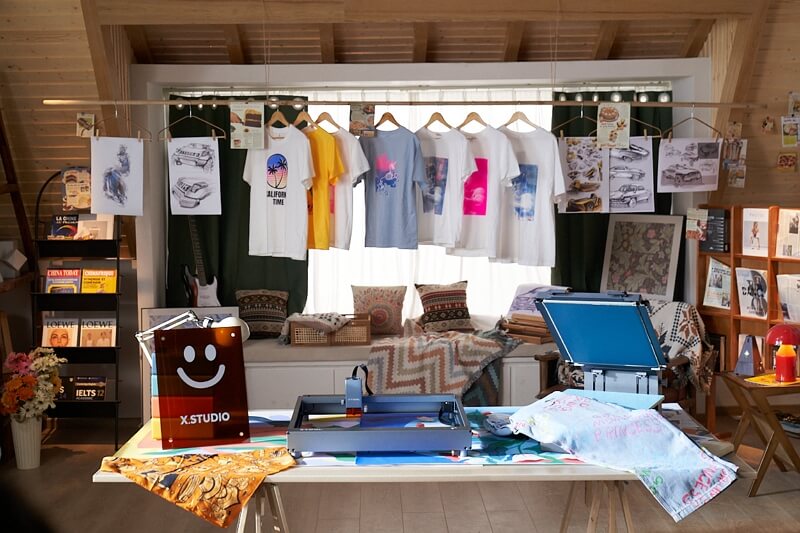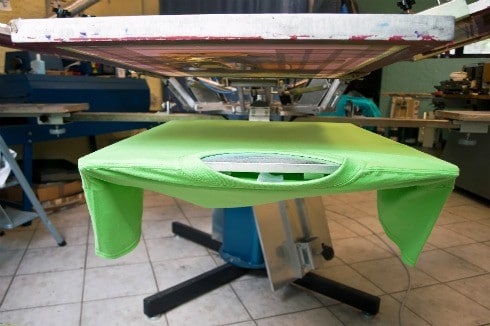The Definitive Guide to Tx Tees
The Definitive Guide to Tx Tees
Blog Article
The Basic Principles Of Tx Tees
Table of ContentsNot known Facts About Tx Tees8 Simple Techniques For Tx TeesThe Definitive Guide for Tx TeesThe Ultimate Guide To Tx TeesAll about Tx TeesMore About Tx TeesThe Best Guide To Tx Tees
That brings your overall to around $1,900 before tax and shipping. Accumulate various other expenses, like the variety of energies it takes to run the store and the cost of ink and solution per style. custom t-shirt design. Take the print listed below as an example. This is a one-color image, so the cost of ink per t shirt is around 20 cents.The solution needs to only be a couple of cents given that you 'd only require to coat one screen for this task. Typically, printers attempt to make up to 45% profit on a print work.

With DTF, you can publish a handful of tee shirts, or just one. Use the very same calculator as the area over to calculate just how much profit you would certainly use DTF transfers. Compare the prices and earnings to whichever technique speaks best to your arrangement and process. Both display printing and DTF have their niches worldwide.
Tx Tees Fundamentals Explained
The most effective way to know? Ask around and see what printing shop like yours are doing. embroidery shop. Attempt both out and see which you like far better
When you're selecting what kind of printing approach to use for printing your art work designs on your garments, it is essential that you understand the differences between these 2 techniques so you can make best use of results while decreasing expenses. Display printing is the most frequently used method for publishing styles on fabrics.
DTG printing is also known as spot or straight to garment printing due to the fact that it publishes only what is needed as opposed to making a screen as display printers do. https://gravatar.com/russellcostello79602. Display printing functions by display filler squeegee display printing ink screen mesh display, then transferring the picture to garment making use of warmth and/or pressure
The DTG printer uses special dye-sublimation inks that are used right into a pre-designed picture by a digital printing system. The inks enter into the fabric, enabling vibrant colors and remarkable information. It's also referred to as area or direct to garment printing due to the fact that it publishes only what is needed instead of making a screen as display printers do.
More About Tx Tees
First, it's much quicker - you can publish a fullcolor picture in minutes, instead of hours for screen printing. Second, there's no established up time or costs included - you can print any type of design you such as, without needing to develop a display initially. Third, there's no waste - since screen printers screen print one layout at once, they have to screen each shade independently.
The paper is really pricey and can just be utilized as soon as. Once it's printed on, it needs to be discarded. - The preliminary purchase price is lower than the in advance investment of DTG printers- You can print multi-color styles one display at a time rather than having to publish each color independently like DTG printing.

The Greatest Guide To Tx Tees
Nevertheless, as opposed to utilizing screen mesh as display printers do, color sublimation printers utilize laser modern technology to transfer your images onto garments or paper. A warm process moves the color from its solid-state straight into the gas stage which in turn integrates it onto fabric substrates when they are swiftly warmed to heats under high stress.
Sublimation printing is environment-friendly. It uses much less water than screenprinting, and due to the fact that it doesn't involve making use of hazardous solvents, it's safe for all kinds of apparel. The dye sublimation inks are additionally odor-free when cured, unlike screen printers that make use of dangerous chemicals throughout the screen printing process that leave an unpleasant odor.
They also conserve money on pricey tools like direct exposure devices given that dye sublimation printers do not need a UV exposure system or a flash cure oven that is usually made use of in screen printing (screen printing shop). What is straight to garment printing (DTG Printing)? DTG printing is an electronic screenprinting process that publishes directly onto fabric using specialized inkjet printers
The Main Principles Of Tx Tees
DTG printing provides lots of advantages over typical screenprinting, consisting of the capability to print photo high quality photos, greater shade vibrancy, and the ability to print designs on darker fabrics. DTG printers work by warming the textile ink up until it transforms into a click here for info gas. The gas then permeates the material, bonding with the fibers to produce a permanent print.

Display printers just prepare their display after that start printing till they run out of item or ink.- There is a wide array of seasoned display printers all over the globe, which can be valuable for newbies. - It's a slower process - display printers often have to wait for the ink to dry before they can print the next shade- Screen printers call for manual work, so there's a higher understanding contour and it takes longer to produce a premium style- Display printing isn't as exact as DTG printing, so you might obtain some "blood loss" of shades from one component of the image onto another otherwise done properly.
10 Easy Facts About Tx Tees Described
Nonetheless, rather than utilizing screen mesh as display printers do, color sublimation printers use laser innovation to move your pictures onto garments or paper. A warmth process transfers the color from its solid-state straight right into the gas stage which consequently merges it onto material substratums when they are swiftly warmed to heats under high stress.
Sublimation printing is eco-friendly. It makes use of much less water than screenprinting, and since it doesn't entail making use of harmful solvents, it's secure for all types of apparel. The dye sublimation inks are likewise unsmelling when healed, unlike display printers that make use of unsafe chemicals during the screen printing process that leave an undesirable odor.
They also save cash on pricey equipment like direct exposure devices since dye sublimation printers don't need a UV direct exposure device or a flash remedy oven that is normally used in display printing. What is straight to garment printing (DTG Printing)? DTG printing is a digital screenprinting process that publishes directly onto fabric using specialized inkjet printers.
About Tx Tees
DTG printing provides lots of advantages over traditional screenprinting, consisting of the capacity to print photo top quality photos, better color vibrancy, and the capacity to print layouts on darker fabrics. DTG printers work by heating up the textile ink till it turns right into a gas. The gas then penetrates the fabric, bonding with the fibers to create a long-term print.
Report this page